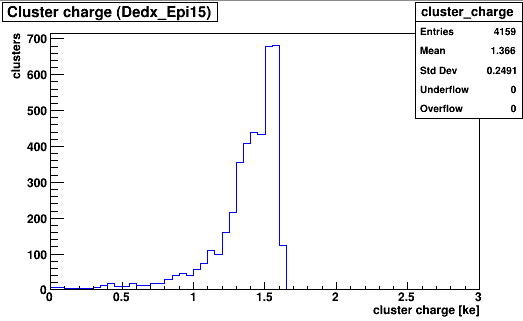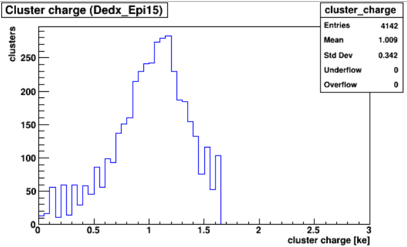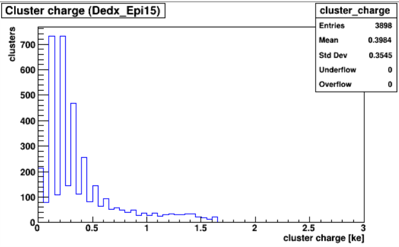Hi~
I’m sorry to interrupt, but I still have a very confusing problem.
When I was analyzing the integration_time parameter, I found that its value had a huge impact on the outcome. In my understanding, the larger the value of integration_time is set, the more charge we should collect. However, after actual verification, it is found that the smaller the value is, the better the collection of carrier is. Why?
Add the fig for my question:


Hi @Newyean
the integration_time parameter simply is a cut-off for how long your simulation should run. Depending on your detector front-end and its integration time, you may have to significantly increase this time. In the end it is a parameter to control your simulation and avoid simulating diffusing charge carriers in undepleted detector volumes for a long time.
The default of 25ns is rather short and comes from the bunch crossing time at the LHC, where detectors need to detector particles within 25ns, otherwise they would be attributed to a wrong particle collision.
Cheers,
Simon
Thank you for your reply, but through practical analysis. I find that the smaller the integration_time, the greater the amount of charge that I detect and collect. I tried converting integration_time=32us (Figure 2 of the above message) to integration_time=10ns (Figure 1), and you can see a big improvement in the amount of charge. This puzzled me.
Hi @Newyean
could you please attach your configs? There are many things that can have an effect on this (recombination, definition of how you collect charges etc).
Simon
Hi!
My relevant profile is shown below, and what I want to simulate is a pixel with an epitaxial layer thickness of 15um and a substrate thickness of 50um. The relevant doping concentration and electric field files are imported from TCAD.(Due to file upload restrictions, I changed my power plant file and doping concentration file into TXT format, you can change back again.)
test_config_Epi15Sub50_D21.conf (3.1 KB)
Dedx_Epi15_geometry.conf (329 Bytes)
Dedx_Epi15_Sub50.conf (1.1 KB)
Run_Square.mac (269 Bytes)
Doping_Epi15Sub50_D21_xyz_DopingConcentration.txt (4.5 MB)
Ele_Epi15Sub50_D21_xyz_ElectricField.txt (9.0 MB)
Thanks for your help!
hi~@simonspa, I’m sorry to interrupt you again. I have thought for a long time and am still very confused.
In the configuration of the above message, I only changed the intergration_time parameter, leaving the other parameters unchanged. The results I got were quite different.
In my understanding, the larger the value[intergration_time], the more reasonable it seems. But the truth is(for example):
When i set
intergration_time = 18ns
I get the distribution is

And when i set:
intergration_time = 180ns
I get the distribution is

From the distribution, we can intuitively feel that the setting of this parameter has a significant impact on us, which is not easy to ignore. Even though I took a good look at how the source files in the background worked, I still couldn’t explain it. ( The configuration files in my simulation process are all in the previous message)
Thank you very much for sparing your precious time to solve our problem, which is very much appreciated!
@Newyean
Hello. By analyzing the configuration file, I think it is because he set max_depth_distance=15um, which is your entire epitaxial layer thickness, that is, the carriers within this thickness will be recorded. And then at integration_time = 10ns, the carriers only propagate for this period of time, and then beyond 10ns, the carriers stop propagating, and then all remain in the epitaxial layer region to be recorded. Ye? I don’t know if I understand this correctly?@simonspa
That’s correct @Isaac !
@Newyean you should really only collect charge carriers from a depth that corresponds to your implant depth of the electrode.
@simonspa @Isaac Thank you for your help, but even so, my CCE is very low, which does not meet our expectations.
Dear developers, do you have any good suggestions about this performance? It is well known that the CCE of chips with epitaxial high resistance is relatively high, but as far as the observation of cluster is concerned, it is disappointing.